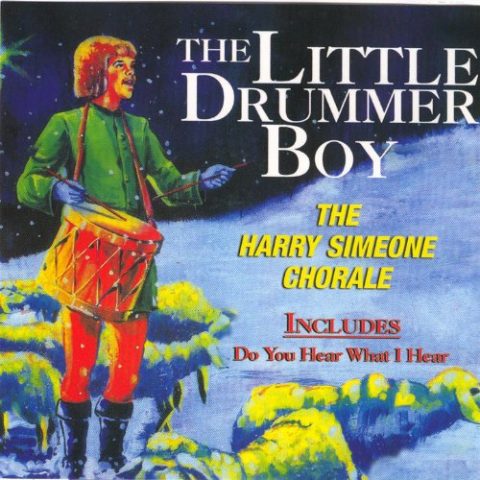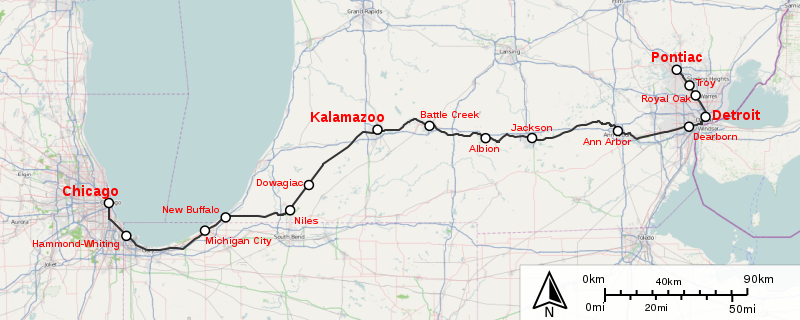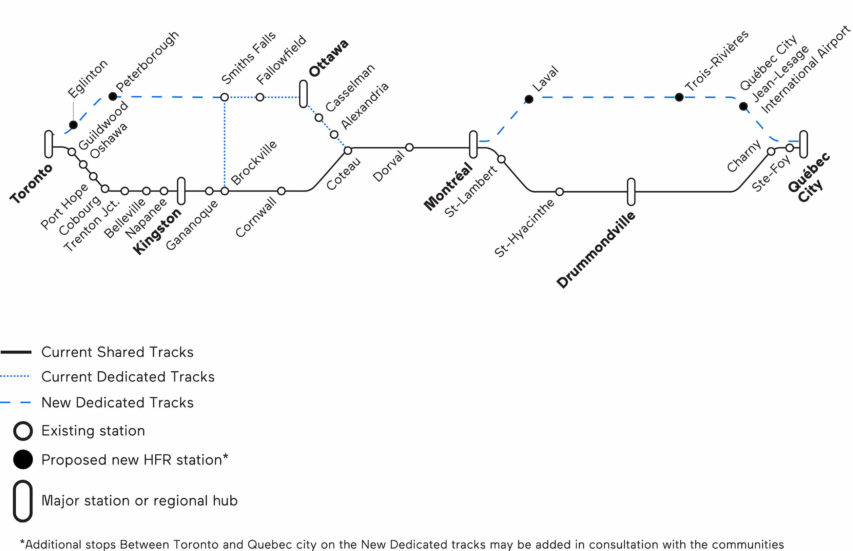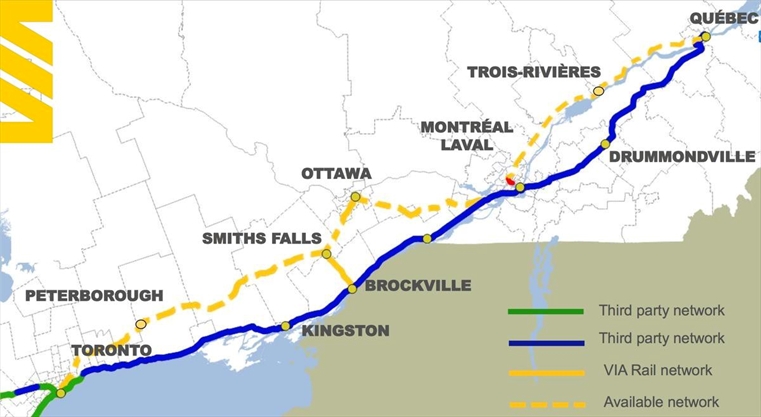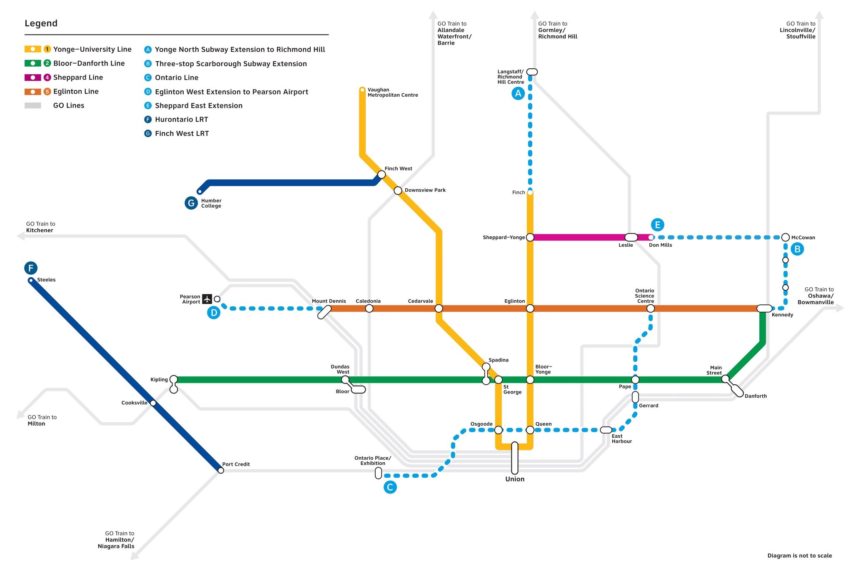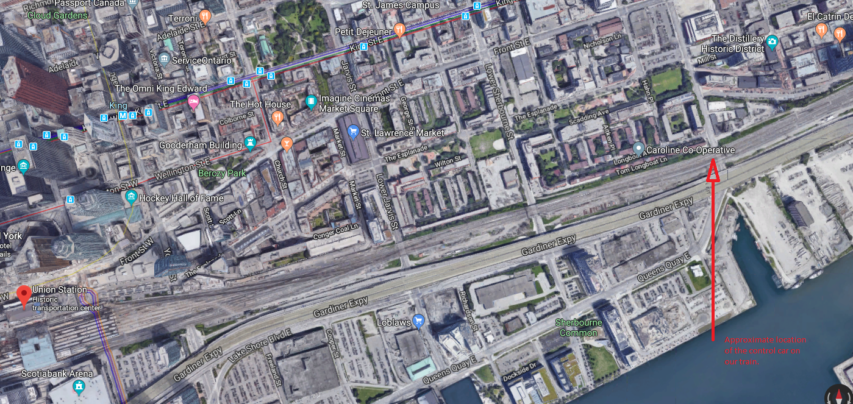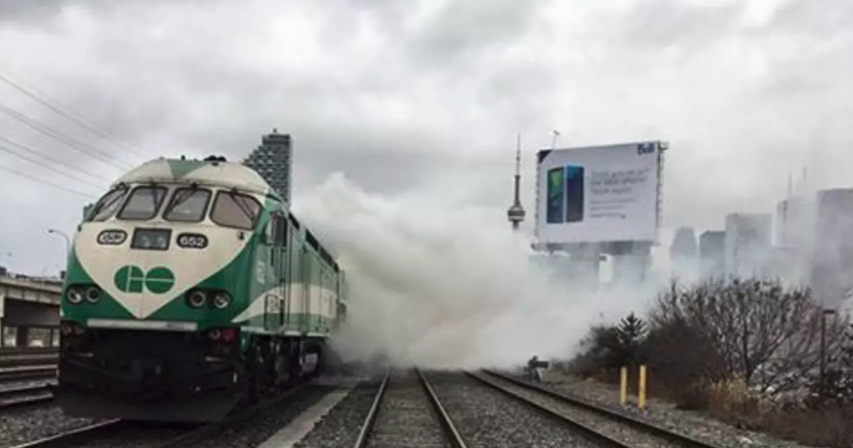Hops, of course, add the bitterness we have come to expect in beer (except drinkers of Molson Golden, who have come to expect almost no taste at all), and they also act as a preservative.
Risk-taking microbreweries these days are known to replace or supplement hops with such oddities as heather, bog myrtle, ginseng, and hemp. As hops are related (by marriage) to cannabis — that other great medicinal herb — we shouldn’t be surprised to encounter hemp beer, and indeed you can usually find it on tap in Toronto at C’est What down on Front Street. It’s not bad either, once you get it lit, which is the hard part.
Nicholas Pashley, Notes on a Beermat: Drinking and Why It’s Necessary, 2001.
December 30, 2019
QotD: Microbrew beer
December 18, 2019
Repost – Induced aversion to a particular Christmas song
Earlier this year, I had occasion to run a Google search for “Mr Gameway’s Ark” (it’s still almost unknown: the Googles, they do nothing). However, I did find a very early post on the old site that I thought deserved to be pulled out of the dusty archives, because it explains why — to this day — I can barely stand to listen to “Little Drummer Boy”:
Seasonal Melodies
James Lileks has a concern about Christmas music:
This isn’t to say all the classics are great, no matter who sings them. I can do without “The Little Drummer Boy,” for example.
It’s the “Bolero” of Christmas songs. It just goes on, and on, and on. Bara-pa-pa-pum, already. Plus, I understand it’s a sweet little story — all the kid had was a drum to play for the newborn infant — but for anyone who remembers what it was like when they had a baby, some kid showing up unannounced to stand around and beat on the skins would not exactly complete your mood. Happily, the song has not spawned a sequel like “The Somewhat Larger Cymbal Adolescent.”
This reminds me about my aversion to this particular song. It was so bad that I could not hear even three notes before starting to wince and/or growl.
Back in the early 1980’s, I was working in Toronto’s largest toy and game store, Mr Gameway’s Ark. It was a very odd store, and the owners were (to be polite) highly idiosyncratic types. They had a razor-thin profit margin, so any expenses that could be avoided, reduced, or eliminated were so treated. One thing that they didn’t want to pay for was Muzak (or the local equivalent), so one of the owners brought in his home stereo and another one put together a tape of Christmas music.
Note that singular. “Tape”.
Christmas season started somewhat later in those distant days, so that it was really only in December that we had to decorate the store and cope with the sudden influx of Christmas merchandise. Well, also, they couldn’t pay for the Christmas merchandise until sales started to pick up, so that kinda accounted for the delay in stocking-up the shelves as well …
So, Christmas season was officially open, and we decorated the store with the left-over krep from the owners’ various homes. It was, at best, kinda sad. But — we had Christmas music! And the tape was pretty eclectic: some typical 50’s stuff (White Christmas and the like), some medieval stuff, some Victorian stuff and that damned Drummer Boy song.
We were working ten- to twelve-hour shifts over the holidays (extra staff? you want Extra Staff, Mr. Cratchitt???), and the music played on. And on. And freaking on. Eternally. There was no way to escape it.
To top it all off, we were the exclusive distributor for a brand new game that suddenly was in high demand: Trivial Pursuit. We could not even get the truck unloaded safely without a cordon of employees to keep the random passers-by from snatching boxes of the damned game. When we tried to unpack the boxes on the sales floor, we had customers snatching them out of our hands and running (running!) to the cashier. Stress? It was like combat, except we couldn’t shoot back at the buggers.
Oh, and those were also the days that Ontario had a Sunday closing law, so we were violating all sorts of labour laws on top of the Sunday closing laws, so the Police were regular visitors. Given that some of our staff spent their spare time hiding from the Police, it just added immeasurably to the tension levels on the shop floor.
And all of this to the background soundtrack of Christmas music. One tape of Christmas music. Over and over and over and over and over and over and over again.
It’s been over 20 years 30 years now, and I still feel the hackles rise on the back of my neck with this song … but I’m over the worst of it now: I can actually listen to it without feeling that all-consuming desire to rip out the sound system and dance on the speakers. After two three decades.
October 3, 2019
Toronto’s gun problem
The city of Toronto has a gun problem, and politicians are lining up to offer variations of the same idea as the solution. You see, unlike every other city in North America, all of the gun crime in Toronto is committed by legal owners of AR-15 and AK-47 “assault weapons”. They’re all fully registered with the federal government, and have taken all the required training courses and keep their weapons under the strict storage and transportation rules, never taking them anywhere but to the legally designated shooting range and always on the permitted route to and from that range (and they’re all life-members of the NRA, of course). This is why, unlike every other city in North America, a ban on “assault weapons” will eliminate 100% of the gun-related crime in Toronto.
In the real-world version of Toronto, however, the proposed ban will have almost no impact on the crime rates, because almost none of the gun-related crimes committed in Toronto involves any kind of “assault weapon”, most being turf disputes involving illegal handguns between drug dealers and personal grudges among “young aspiring rappers who are just about to turn their lives around”:

Colt Canada’s model SA20, a commercial version of the Canadian C7A2 rifle.
Image from the Colt Canada website.
If Liberals are re-elected to a second term in government, their plan to tackle gun violence includes a ban on high-velocity, semi-automatic rifles like the AR-15, and gun marketing bans that evoke America’s favourite action figure.
“There are sometimes advertisements and videos that appear (on social media) … to imply that we can be GI Joe on our main street,” Public Safety Minister Ralph Goodale said about the Liberal platform’s vague reference to “limit the glorification of violence by changing the way firearms are advertised marketed and sold in Canada.”
During a Q&A with reporters in Ottawa on Sunday, where Goodale fielded questions about their incumbent government’s election promises, the minister attempted to qualify freedom of expression implications with the types of promotional material that could be targeted.
“(It) depicts a kind of behaviour that is simply inappropriate and some people would find it quite threatening … and it leads to the impression of military assault weapons is something you just do, every day,” explained Goodale.
I’m not a big consumer of advertising, but I can’t recall the last time I saw any kind of ad for firearms in Canada that wasn’t in a gun magazine (and there are not many of those sold in typical corner stores). Scary black guns in Hollywood movie ads, sure … they’re everywhere … but that’s not in any way related to the advertising, sale, or use of guns in Canada.
September 23, 2019
The “Global Climate Strike”
The big “let’s all play hooky from school” event’s Toronto organizers have been getting positive coverage from some of the local media, because of course they have. Here’s Tanya Mok for BlogTO, listing the totally reasonable and not in any way unrealistic “demands” of the movement:
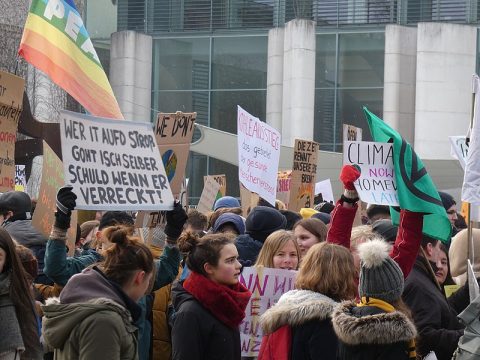
FridaysForFuture Demonstration, 25 January 2018 in Berlin.
Photo by C. Suthorn via Wikimedia Commons.
The coalition has made a list of seven demands, which “reflect the rallying cries of the intersectional movements” they belong to. Some of those demands include:
- Indigenous rights and sovereignty.
- The protection of forests, land, and water sources.
- A shift to publicly-owned renewable energy, and reducing national carbon emission by 65% by 203, reaching zero emissions by 2040.
- A $15 minimum wage for all, and higher taxation on the rich.
- Universal public services like health care and dental care, free university and college, housing as a human right, and free public transit.
- Justice for migrants and refugees, allowing status for all. That includes putting an end to deportations and allowing for the full access to public services.
There will be a concert at Queen’s Park after the rally, as well as a follow-up benefit concert at the Tranzac Club in the evening. A giant street mural project run by Greenpeace will also be taking place prior to the rally, around 10 a.m., at the southern point of Queen’s Park.
August 15, 2019
Amtrak is considering reviving at least one Chicago-Toronto passenger train
Lauren O’Neill reports on an Amtrak service extension proposal:
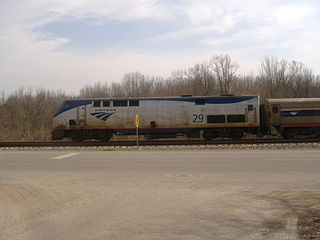
Amtrak P42DC locomotive #29 with a Blue Water or Wolverine train waits on a siding for a train in the opposite direction to pass in Comstock, Michigan.
The largest passenger railroad service in U.S. is considering a proposal that, if approved, would see trains running directly from Chicago to Toronto and back.
As discussed at the Michigan Rail Conference in East Lansing last week, Amtrak wants to extend its Wolverine line — which currently sees trains moving back and forth between Pontiac, MI, and Chicago, IL, three times per day — all the way up to Canada’s largest city.
A presentation slide shared by an official Michigan Department of Transportation Twitter account on Thursday shows that Amtrak wants to extend “at least one” Wolverine train into Ontario, “where it could continue as a VIA Rail Canada corridor service from Windsor/Walkerville to Toronto.”
It won’t happen overnight, and there’s plenty of work to be done in order for the train service to work, including the construction of a new border processing facility.
July 17, 2019
VIA Rail’s “High Frequency Rail” proposal
In Trains, Bill Stephens outlines some of the strikes against VIA Rail Canada’s hopes for a dedicated passenger-train-only route between Toronto and Quebec City:
Last month VIA’s $4 billion plan got a $71 million boost that will fund additional feasibility studies. It shouldn’t take $71 million to figure out the plan is fatally flawed. Why? Because it won’t accomplish its chief aim: Eliminating the mind-boggling delays related to sharing tracks with Canadian National freight trains.
To be successful, passenger service needs to be fast, frequent, and dependable. VIA’s current service is faster than driving between Canada’s two biggest cities, Toronto and Montreal. It’s fairly frequent, too, with seven weekday departures between Toronto and Montreal. But it’s not dependable. On-time performance is in the low 70% range for the entire Toronto-Ottawa-Montreal-Quebec City corridor. VIA blames the late trains on interference from CN freights, primarily on the double-track route linking Toronto and Montreal.
So you can understand why VIA would lobby the Canadian government for a dedicated passenger route. Last year VIA’s Eastern Corridor, the Canadian equivalent of Amtrak’s Northeast Corridor, carried three-quarters of VIA’s entire ridership. It stands to reason that you can fill more seats with service that’s faster, more frequent, and more reliable.
[…]
Keeping passenger and freight trains on time takes a combination of operational discipline, the right track capacity, and a willingness to make it work. CN takes pride in its operational discipline, and executives say the Eastern portion of the railroad, between Chicago and Halifax, is underutilized. What’s missing, it seems, is a willingness to expedite VIA trains.
VIA needs a cooperative host railroad more than it needs a new route that would bypass intermediate population centers, face opposition from the not-in-my-backyard crowd, take years to build, and in the end would still have to rely on shared trackage in key areas.
Also a monumental problem without an apparent solution: Squeezing extra trains into Toronto Union Station and Central Station in Montreal on new approaches that would only complicate operations and increase conflicts with freight and commuter traffic.
June 16, 2019
The “NBA” unveiled
Just before his mysterious disappearance (police are baffled, no clues have been found, etc., etc.), Colby Cosh filed a bizzare rant with his newspaper that they somehow forgot to spike:

Kawhi Leonard of the Toronto Raptors about to attempt a free throw during game 2 of the 2019 NBA Finals.
Photo by Chensiyuan via Wikimedia Commons.
By the time you read this, I may be dead. The newspaper industry’s taboo against openly discussing the scriptwriters who create the elaborate soap operas we call “professional sports” is a strong one, and viciously enforced. The money we make from pretending that sports aren’t fake is too important to our bottom line. Good people who have tried to write articles like this have found their careers and lives cut short.
No doubt it will be so with me, but I feel that the geniuses behind the “National Basketball Association” — rumoured to be a tight-knit group of a half-dozen or so fiction veterans recruited from Hollywood, the manga industry, and, in at least one case, Harlequin Enterprises Ltd. — deserve credit. Decades of planning went into this ambitious, implausible Toronto Raptors story line. The conquest of Canada now seems complete.
For decades no one thought that basketball, as a theatrical production, could make headway in Canada against the National Hockey League. The NHL’s scriptwriters were thought to be too naturally, intuitively in touch with Canada’s Victorian and Protestant values. And Canada, owing to its geography, had a natural market corner on “athletic” performers who could skate. The league could always come up with a backstory and an affable personality for a “Wayne Gretzky” (actually a figure skater from Swift Current named Kevin Feinberg) or “Alexander Ovechkin” (born Dennis Brian York in Nepean, Ont.)
Unfortunately, the NHL, its creative staff increasingly laden with third- and fourth-generation mediocrities, started to spin its wheels as any monopolistic institution does in the end. It became the CBC of sports. Head showrunner Gary Bettman adopted an ambitious strategy of colonizing new American markets, but failed to bring new blood into the writing room. He was left with increasingly cheap, desperate moves like inventing the “Vegas Golden Knights” and injecting them directly into the Stanley Cup final.
Accounts of when and how the so-called “National Basketball Association” decided to exploit this weakness remain cloudy. They say one of the writers was thumbing through the sport’s “bible,” the binder every television program keeps on hand to guarantee continuity, and noticed that basketball’s creation myth actually involves a Canadian inventor-hero, “James A. Naismith.” (This has always invited suspicion among the punters. How many Naismiths do you run across?)
May 1, 2019
To the surprise of nobody, Ontario’s cannabis stores are still struggling
The Ontario government created a tightly restricted retail market regime for newly legal cannabis sellers, with a tiny number of licenses issued and highly bureaucratic “safeguards” for the retailers’ guidance and control. The city of Toronto, for example, with a population in the 2.7 million range, was allocated a whopping five stores. Only one of those stores was allowed to open on the first day of legal retail sales, and today there are three in operation, despite penalties and potential loss of licenses at stake for those who haven’t opened yet. The chorus of complaints from would-be customers has not diminished much, if at all since day one:
With legalization day long come and gone (and the euphoria of being able to spark a joint in public gone with it), the turtle-paced roll-out of Toronto’s weed retail scene goes to show the government and the OCS have some work to do before purchasing legal weed can be completely glitch-free (and lineup free, too).
Here are a few of the lows of getting high, courtesy of Toronto weed stores since buying pot became legal.
Weed prices are up
According to Statistics Canada, prices for weed have steadily been on the up and up since legalization last year.While Nova Cannabis is trying to tackle its biggest competitor (illicit weed stores) with Black Market Buster deals, people who are buying their cannabis from the OCS are now paying an average of about $9.99 per gram—that’s roughly $3 more than those buying their bud from illegal stores.
Black market weed is still thriving
There’s still around 20 illegal dispensaries operating in the city, and at least 100 illegal marijuana delivery services. Why? See above: unlicensed weed stores are significantly cheaper than the legal ones, and loopholes in the city’s laws allow them to operate pretty much undisturbed, save for the occasional raids.[…]
OCS packaging
Aside from the fact every product coming out of the OCS comes triple-wrapped in excessive, sometimes non-recyclable polypropylene packaging, the containers are just plain confusing.Lack of packaging standards means your order comes in all shapes and sizes, regardless of whether you’re getting bud or pre-rolled joints, which is as confusing for buyers as it is for those behind the counter.
And that doesn’t even include the even louder chorus of complaints about the quality of the legal product…
April 29, 2019
Cannabis stores struggling against cheaper black market weed outlets
In a rational world, a license to sell legal cannabis from a storefront where you have almost a legal monopoly would be a license to print money — the market demand is very clearly real and widespread. Yet Toronto’s legal cannabis stores are still suffering:
How much would it suck to go through all the trouble of opening a legal weed store, only to have dozens of people do the exact same thing without paying for permits, inspections or meeting any sort of government regulations?
How much would it suck to then watch these people not only get away with their illegal operations, but do so while luring your customers away with cheaper prices?
Probably as much as it would suck to sink years of your life into building a retail cannabis business and then learning that only 25 of such stores could exist in all of Ontario — and that the owners of those stores would be chosen at random.
It’s been nearly one month since Doug Ford’s PC government allowed the first wave of brick and mortar retail cannabis stores to open across Ontario. Three have launched so far in Toronto, where five licenses were issued in total, but many consumers aren’t pleased with consistently long lines and higher (than pre-legalization) prices.
So, like the rest of Canada, Toronto continues to buy black market weed.
Roughly 20 unlicensed dispensary storefronts are still up and running across the city as of April 25, in addition to more than 100 illegal marijuana delivery services.
You can find them all on WeedMaps, a popular online cannabis community that’s been listing these types of businesses for adult consumers in North America since 2008.
It’s not that police and bylaw enforcement officers can’t find these illicit dispensaries — I mean, operators are advertising their locations and menus online for all to see.
The problem is that no level of government can (or will) shut them down for very long.
“Why not?” you ask? Well, it’s complicated.
April 13, 2019
Canadian 8mm “Sterile” Bren Gun
Forgotten Weapons
Published on 12 Apr 2019This Bren is lot #1013 at Morphy’s April 2019 auction:
https://www.forgottenweapons.com/cana…The John Inglis company in Toronto first opened in 1859 as a metalworking shop, and grew steadily over the decades under first John Inglis, and then later his sons. Inglis did substantial amounts of military work during World War One, but the Great Depression hit it hard, and both William and Alexander Inglis died in 1935 and 1936 respectively. The company went into receivership but was purchased by one Major James Hahn (DSO) and a group of business partners in November of 1936. Hahn and his associates saw an opportunity to use this large manufacturing facility to make machine guns for the military, and they were successful – in October 1938 they were awarded a contract to make 5000 MkI Bren guns. More contracts would follow, and by the height of World War Two the company had some 15,000 employees and more than a million square feet of floor space.
Among many other projects, Inglis was contracted to make small arms for sale to the Nationalist Chinese government under Chiang Kai Shek – both High Power pistols and Bren guns in 8mm Mauser (to fit the Chinese standardization on that cartridge). A batch of 8mm ZB-30 light machine guns were brought in from the Far East to use as a pattern, and Inglis engineers were able to successfully redesign the Bren to use that cartridge and magazine.
Where the story gets hazy is in trying to determine how many were made and for whom. The Chinese guns are marked in Mandarin on the receivers, and have “CH” prefix serial numbers, like the Chinese contract High Power pistols. However, two additional variations exist without those Chinese markings. Some are marked “7.92 Bren MkI” and “Inglis 1943” (or 44 or 45), and others – like this one – are just marked “7.92 Bren MkI”. The dated ones are typically referred to as Resistance guns, intended to be supplied to European resistance units for whom 7.92mm ammunition was more readily available than .303 – although information on how many guns were supplied in this way (if any) is difficult to find. The last group is generally called “sterile”, and it is not clear what their purpose is. This particular example is one of 23 that were registered in the US in the early 1960s to Interarms, and it does appear that they were associated with some clandestine US military activities. The serial numbers of those 23 Interarms guns range from 1-5343 to 2-8045, suggesting a production of 13,000 or perhaps as many as 28,000 guns – that is quite a lot to be undocumented and missing.
Hopefully, more information will turn up in the future to shed light on the purpose and use of these 8mm Brens. We do know for sure that many thousands did go to Chinese forces, and some were brought into the UK, where in the 1960s they were used in the development of the 7.62mm NATO L4 version of the Bren.
http://www.patreon.com/ForgottenWeapons
Cool Forgotten Weapons merch! http://shop.bbtv.com/collections/forg…
Contact:
Forgotten Weapons
PO Box 87647
Tucson, AZ 85754
April 12, 2019
Premier Ford “could go down in history as the premier who landed downtown Torontonians their white whale subway”
Chris Selley finds himself surprised at how sane Doug Ford’s GTA subway-and-light-rail expansion plans sound:
I’ll say this much at least about Premier Doug Ford’s big $28.5 billion transit announcement on Wednesday morning ($11.2 billion if you only count provincial money): I never thought I would see him so enthusiastically tout a much-needed transit line to and through enemy territory in downtown Toronto. Faint praise, perhaps, but when Ford said he wanted to upload Toronto’s subways to the province, I never imagined a plan even half this superficially sane.
Crowding on the Yonge line at Bloor Street presents “a clear health and safety problem,” Ford told reporters in Etobicoke, “and without action it is only going to get worse.” Thus his number-one transit priority is the same as everyone else’s: the Downtown Relief Line, which the PC government has wisely redubbed the Ontario Line.
The most basic and essential piece of that line, which Toronto city staff are already working on, would connect City Hall with Pape station on Danforth. Passengers who live in the east end and work downtown could thus avoid the bottleneck at Yonge and Bloor, relieving the alarming rush hour situation on platforms there and — assuming new TTC signalling technology works as promised — freeing up southbound capacity for folks from York Region: Ford vows to extend the Yonge line to Richmond Hill (cost: $5.6 billion).
The order here matters more than the timeline (2027, supposedly). It is undisputed that the DRL has to happen before the extension. That’s basic knowledge. But Ford is capable of ignoring or fouling up very basic knowledge when stumping for subways. This is a man who nearly promised Pickering one. On Wednesday, he sounded remarkably well briefed.
Ford’s Ontario Line wouldn’t stop at Danforth and City Hall, either. In the east it would head north across the Don Valley, through Thorncliffe Park and up to Eglinton. This idea is nearly as old as the DRL itself. And it would jog southwest from downtown to Ontario Place — a novelty, but again, not crazy. Total cost for the line: an at least semi-plausible $11.2 billion.
April 11, 2019
Ontario government unveils massive subway and light rail expansion for the GTA
Doug Ford has always been a fan of subways, but now that he’s the Premier of Ontario, he’s getting to indulge his subway fetish in a vast expansion to heavy and light rail transit in and around Toronto:
The plans include:
- An expanded downtown relief line, now to be called the Ontario line, running from Ontario Place on the lakeshore through downtown along Queen Street then crossing the Bloor-Danforth subway line at Pape station and running north to the Ontario Science Centre on the Eglinton Crosstown LRT line. This line is optimistically to be ready for opening by 2027.
- The existing Sheppard Line will be extended east from Don Mills to McCowan, where it will intersect with the planned Scarborough subway extension (now to include three stops, not just the one originally announced, and to be completed by 2030).
- The Yonge-University line will be extended north from current terminus at Finch to the Richmond Hill Centre with a hoped-for completion date soon after the Ontario line.
- The Eglinton Crosstown line will be extended west to Pearson airport, with a target completion date of 2031.
- New light rail lines will be created between Finch West on the Yonge-University subway to Humber College, and along Hurontario Street in Mississauga from Port Credit on the lakeshore to Steeles Avenue in Brampton.
To accomplish all of this will require financial contributions from the City of Toronto, York Region, and the federal government, as the province is only funding just over one third ($11.2 billion) of the estimated $28 billion price tag.
Of course, it’s a Doug Ford plan, so none of the usual suspects in Toronto are happy about any of it.
February 27, 2019
Toronto’s transit cheat epidemic
I knew the Toronto Transit Commission (TTC) had an issue with fare evasion, but I had no idea it was as prevalent as this:
Anyone who has ever sat through a Toronto Transportation Commission meeting has likely heard anecdotal evidence that fare evasion on the transit system is utterly rampant, if not a mockery of Western civilization itself. Traditionally, such people tended to be treated as harmless cranks. TTC staff would placate them with various internal audits conducted over the years that found roughly two-per-cent fare loss. As recently as 2017, the TTC was claiming just 1.8 per cent of passengers on streetcars — where it’s easiest not to pay — weren’t ponying up.
Well, so much for that. In a convincing report issued last week based on 136 hours of in-person observation and 38 hours of security footage, city auditor-general Beverly Romeo-Beehler estimates fare evasion rates at 15.2 per cent on streetcars, 5.1 per cent on buses and 3.7 per cent on subways, for a total weighted average of 5.4 per cent— around $61 million a year, plus roughly $3.4 million thanks to malfunctioning Presto card equipment owned by Metrolinx.
To put that in perspective, last year’s average 3.2-per-cent fare increase was projected to add $17 million to TTC coffers. If the AG is right, commuters are paying something like 12 cents per trip to subsidize free riders. And the problems underlying the issue are nothing short of jaw-dropping. For one thing, the auditor-general’s team observed scores of adults — and precisely zero children — using child Presto cards to ride for free.
January 8, 2019
A typical commute
I had to go into Toronto on Monday, and the address was near Queen and Yonge, so I could take the GO train most of the way (which means I could at least get some reading done during the train trip). Getting there wasn’t as easy as I’d hoped, as the traffic on the 401 was slow-to-stopped as I got on, but the sliproad to the next exit was moving even slower than the main highway. Once we got past the turnoff, the speed increased up to slow-but-steady for a few kilometres. Up ahead, there were flashing red and blue lights. I figured there was an accident, so I switched lanes away from what appeared to be the accident site. But it wasn’t an accident, at least not by most definitions. In the eastbound lanes, there were what appeared to be a full dozen police vehicles, surrounding a black car that looked like it’d pinballed against the concrete lane dividers a few times before coming to a stop. Just as I was passing the epicentre, I saw a police officer escorting a handcuffed man from the vehicle toward one of the police cars.
With that delay, we’d pretty much missed the chance to catch the original GO train we’d planned on, but there was another scheduled to arrive about fifteen minutes later which we could still catch.
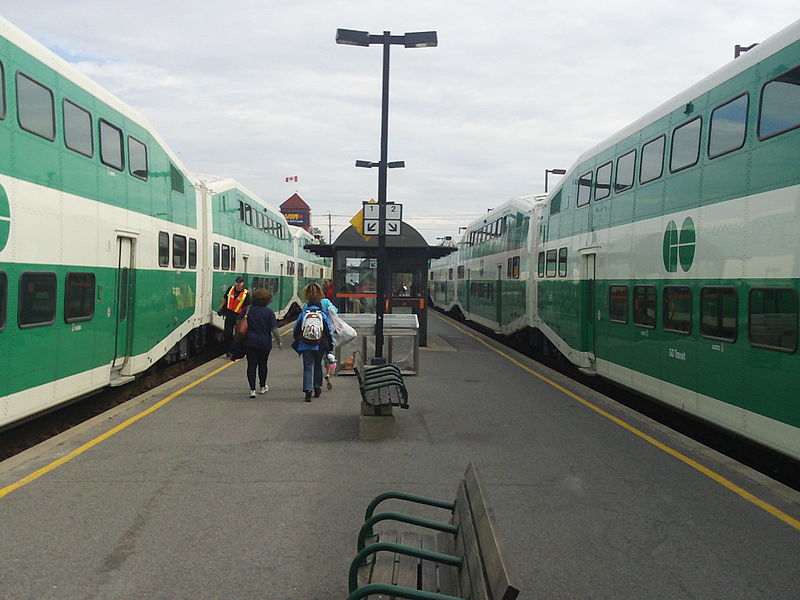
The platform at Oshawa GO station. The parking situation is insane at Oshawa, so I usually drive one stop west and park at Whitby GO instead.
Photo by Anthony Easton via Wikimedia Commons
Nearing the end of our journey, the lights in the car went out and the train coasted to a stop right in the yard throat of Toronto’s Union Station. For several minutes, there was no information from the conductor — sorry, the “Customer Service Ambassador” — but then he announced that we all needed to move along the train “in the opposite direction the train is travelling” to car number 2xxx. We all got up and shuffled through the train passing through several bilevel cars until we started to smell smoke … the conductor had sent us in the wrong direction and we’d been walking toward the fire, not away from it. We could also see some grey smoke being blown toward us from the locomotive end of the train, so it didn’t take much to persuade everyone that we needed to walk to the front of the train instead.
There seemed to be a lot of sirens approaching the train, as the emergency services were dispatched, and no other trains could get into or out of the east end of Union Station for over an hour while we sat in the slowly cooling control car at the west end of the train. Eventually, they were able to get a crew to bring out another train for us to transfer into and they took us the kilometer or so into Union, ninety minutes late.
blogTO had a few photos of the end of the train we couldn’t see:
A GO Train was on fire in #Toronto earlier today https://t.co/EgkEmBPyHx – Video by Ali Al Astarabadi pic.twitter.com/BIGUitgflZ
— blogTO (@blogTO) January 7, 2019
After those two incidents, I was wondering if the universe was trying to tell us we shouldn’t have gone into Toronto after all…
January 6, 2019
“Carding” is an infringement of rights that does nothing to reduce crime
Chris Selley wonders why the blatantly unconstitutional practice of “carding” people without even a hint of suspicion that they’ve done anything wrong was instituted in the first place:
… it’s far easier to make a case that carding has no effect at all on serious crime than that it has a huge one. But even if previous carding practice had “worked,” even if the new regulation had stopped it from working, it barely even amounts to a defence. As [Justice Michael] Tulloch notes, “the regulation simply gives effect to the existing law that people do not have to provide their identification when there are no reasonable grounds to believe the person has committed an offence.”
If carding “worked,” in other words, it relied on citizens not knowing or caring about their already-existing right to be left alone whilst minding their own business, or being too intimidated to exercise that right — as well they might be. Politely refusing an armed man or woman’s request to identify yourself is no small thing, all the more so if you have “nothing to hide.”
The problems inherent in such a situation are myriad. There are quantifiable harms: People were denied jobs and security clearances, and in at least one case menaced by child services, thanks to information stored in police databases that implicated them in nothing other than being included in a police database. And there are more existential harms. Imagine growing up with a squeaky-clean nose yet constantly feeling like a person of police interest. It’s profoundly alienating, especially when targets quite logically conclude, based on well-documented statistics if not their own intuition, that they’re being harassed because of their race, skin colour or some other innate characteristic. It’s no less insidious if the bias is unconscious; it might even be more so.
Nothing good can come from it, and plenty bad. It hinders police in solving crimes, for one thing: “When a segment of society believes that it has been unfairly targeted by the police,” Tulloch writes, “it will delegitimize the police in their eyes.” All those desperate calls for witnesses to come forward will be met more skeptically. Tulloch cites research showing “inappropriate interaction with police” can even “desensitize young people from guilt regarding potential acts of crime.”

